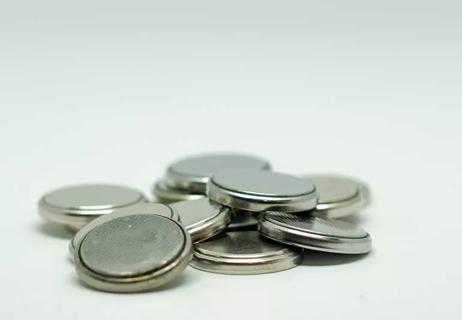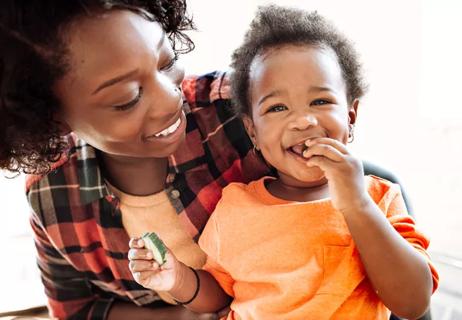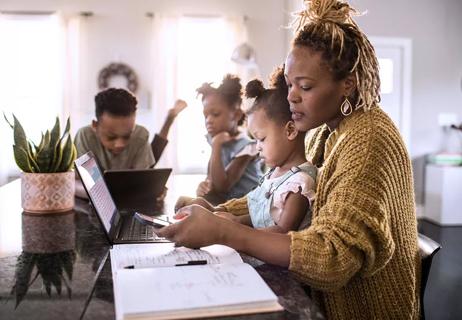They’re nontoxic, but crayons can cause an upset stomach and pose a serious choking hazard

You’ve heard the phrase, “Taste the rainbow,” but you didn’t mean it quite so literally! If you notice that your kiddo has crunched into a colorful crayon or two, take a deep breath: There’s probably no need to panic.
Advertisement
Cleveland Clinic is a non-profit academic medical center. Advertising on our site helps support our mission. We do not endorse non-Cleveland Clinic products or services. Policy
“Crayons are nontoxic to children,” says pediatrician Lisa Diard, MD. “They may cause your child some stomachaches, but in general, they’re not toxic.”
Whew. Dr. Diard walks us through what to do if you realize your child has crunched into their favorite color.
Most children aren’t treating their 24-pack of crayons like a stash of secret snacks. They’re doing that thing kids often do, where they put something in their mouth and mull it over, nibbling a little bit here and there.
“For children, especially those under 3 years old, this is the way they explore their environment,” Dr. Diard explains. “They size up an object by putting it in their mouth.”
Now, we’re not saying crayons are a healthy treat. But they’re also not going to do anything too terrible to your little one’s insides.
“The most common problem is an upset stomach,” Dr. Diard says. “Give them a little bit of water and a light snack to help their tummy, then wait and see what happens.”
Crayons can also have a laxative effect, meaning they can make kids poop. If too many of those colors have teeth marks in them, keep your child at home and close to the bathroom for a bit — and be sure to keep them hydrated, too, as diarrhea can be dehydrating.
Advertisement
Now that you know that crayons aren’t toxic, you might still be curious: What are they made out of? And if none of them are particularly problematic, why are some packages specifically labeled as being nontoxic?
There are two ingredients in standard crayons that seem initially worrisome: paraffin wax and lead.
Paraffin wax, the primary ingredient in most crayons, is a byproduct of petroleum, coal or oil shale — but it’s not as scary as it sounds.
“It comes from the purification process, and it appears in crayons only in very small amounts,” Dr. Diard notes. “Toxins in paraffin are very, very minimal and really do not pose harm.”
Yes, many crayons also contain lead — but in very trace amounts.
“A certain amount of lead can cause problems, but lead is everywhere in our environment, and we’re all exposed to it on a daily basis,” Dr. Diard says. “Studies have found that children’s exposure to lead in crayons, even over time, is not enough to cause harm.”
If you’re feeling uneasy, remember what we said at the beginning: Crayons are nontoxic. But there are a few things you can do to make sure you’re buying the safest possible crayons for your kiddos.
If you’re buying standard crayons, you should always look for the kind in a box that displays a seal of approval from the Art and Creative Materials Institute (ACMI). Their seal, which has the letters “AP” in the center, means the product has been “Certified in a toxicological evaluation by a medical expert to contain no materials in sufficient quantities to be toxic or injurious to humans, including children, or to cause acute or chronic health problems.”
In simpler terms? Crayons with the ACMI seal have been deemed safe for your kids, even if they nibble on a few. Reputable brands like Crayola®, Cra-Z-Art® and Faber-Castell® are ACMI-approved, and you can use ACMI’s certified product search tool to check on other brands.
If you’re still feeling nervous, you may want to switch to all-natural crayons instead.
“Crayons made of all-natural ingredients like beeswax or soy wax have no potential toxins at all, and they’re readily available, especially online,” Dr. Diard says.
Crayons may not be toxic, but they are a choking hazard for little ones. As with any other small items, your child should only have access to them with adult supervision.
“When you have a toddler, one of the most important things is to keep materials out of their reach so that you know they're safe,” Dr. Diard advises, “and always be sure to supervise them when you're using those materials.”
And though crayons aren’t particularly dangerous, kids can sometimes get a hold of other household items that are.
Know when to call emergency services (like if they lose consciousness, have a seizure or have trouble breathing) or head to the emergency room (like if they’ve swallowed a battery, magnet, coin or hard toy).
Advertisement
Dr. Diard also recommends keeping the number for poison control stored in your cell phone — and maybe pinned to your refrigerator, where the babysitter can easily see it:
“Poison control has a database of common and not-so-common items found in homes, and they can advise you of exactly what to do,” Dr. Diard says.
Advertisement
Learn more about our editorial process.
Advertisement

These little batteries can do severe damage — go to the ER immediately

Leaving footwear on invites germs, bacteria, toxins and other unwanted guests into your home

Your baby needs to able to roll in both directions before they can make the switch

Too much screen time and unrealistic expectations and perceptions and can lead to an increased risk of anxiety and depression

Cut up foods into small pieces and make sure you sit down and focus during meals

Sailing between parenting styles in specific situations is key

Caring for your own well-being and setting manageable expectations can dispel that feeling

Your baby’s skin is more sensitive, so keep the tub water under 100 degrees Fahrenheit

Type 2 diabetes isn’t inevitable with these dietary changes

Applying a hot or cold compress can help with pain